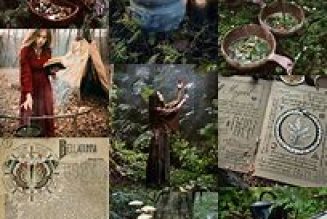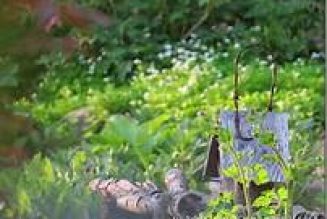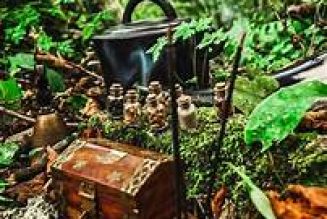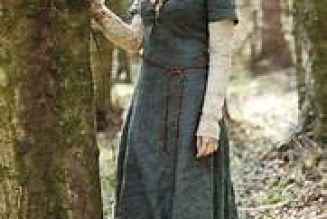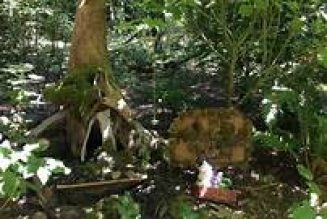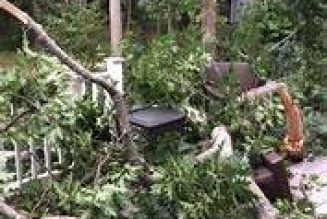The sun, moon and stars have equal importance in the Hedge Druid’s
Craft. With the cycles of the sun we find ourselves travelling through the
year with agricultural festivals as well as the solstices and equinoxes
being celebrated. The earth’s orbit around the sun gives us our year, and
its axis gives us our seasons. We can watch where the sun rises and sets
each day, and make note in our own local area so that we will know that
when the summer solstice arrives, the sun rising directly over the
chimney of the pub, or behind a copse of trees on the hillside, or by the
right-hand side of the neighbour’s shed. Putting the great astronomical
forces into the context of your local environment brings matters down to
earth, if you’ll pardon the pun.
There were 12-13 moons in each calendar year, and each had its own
name that varied from region to region. This moon (which is where we
get our term, “month”) often relates to a natural phenomenon relevant
to the time of year. Here is an example of each month’s moon title, and
if there are two full moons in a calendar month, the second is termed a
“blue moon” (though this is historically incorrect, for a blue moon is
actually the third full moon in an astronomical season with four full
moons versus the normal three).
January – Wolf Moon
February – Snow Moon
March – Storm Moon
April – Growing Moon
May – Flower Moon
June – Mead Moon
July – Hay Moon
August – Corn Moon
September – Harvest Moon
October – Hunter’s Moon
November – Frost Moon
December – Cold Moon
Two of these moons are especially noticeable because they rise on
successive evenings more quickly than other moons. The Harvest Moon
and Hunter’s Moon have a shorter period of darkness between sunset
and moonrise, and they both appear larger in the sky than any other
moon. This is due to the Earth’s tilt at that particular time of the year.
These moons often appear very red in colour as they hang lower in the
sky when viewed through the huge number of particles in the
atmosphere.
Spend time watching where the moon rises and sets if you can. Notice
how the arc of the moon’s journey works in relation to the sun’s journey
in the sky and the seasons. Learn all that you can about how the phases
of the moon are created, as well as those special times of both solar and
lunar eclipses. During these moments, great works of magic can be
performed, especially for the Hedge Druid’s Craft, working as she does in
those liminal times!
As well as the sun and moon, our work in the Hedge Druid’s Craft
should also consist of the knowledge of the stars in their whirling round
each night. We can use the stars to navigate, or simply enjoy them,
greeting them as old friends, some who are with us always, and some
who only visit at certain times of the year.
You can locate the north celestial pole by finding the North Star, or
Polaris as it is named. To do so, you must first find Ursa Major (in which
you’ll find smaller collections of star constellations such as the Plough
which is sometimes called the Big Dipper). The Plough is easy to locate,
made up of seven stars that form the shape of an old plough (before
mechanised ploughs) or the shape of a ladle or “dipper”. These stars are
always visible in the northern hemisphere. At the lip of the cup furthest
away from the handle, if you follow the line from the bottom to the top
of the lip and extend that further, you will find that it points directly to
Polaris. That is North.
You can use Polaris or any other star in magical workings, but note
that not all stars are always in the sky all year round. Some of the
brightest stars in the Northern hemisphere are: Sirius
Alpha Centauri
Rigel
Belelgeuse
Aldebaran
Regulus
Find a good book on the starry heavens and learn what you can see from
your area. If you live in a heavily populated area, only some of the
brightest stars may be seen. If you are lucky enough to live in the
countryside, you will have a much larger repertoire to work with. If you
choose to do a magical working, or a hedge riding work at night, you
can always connect to the energy of a chosen star first in order to boost
your work. (You can do this during the day as well, but when the star is
visible it has more impact on your psyche.) Before you begin your work,
you might say something like: Star of (name the star)
May your light shine upon me and my work.
May I join in your dance, as you dance the starry round.
Fill me with your light, neither of sun nor moon
But that of the silvery eldritch light of Faerie and the Otherworld.

